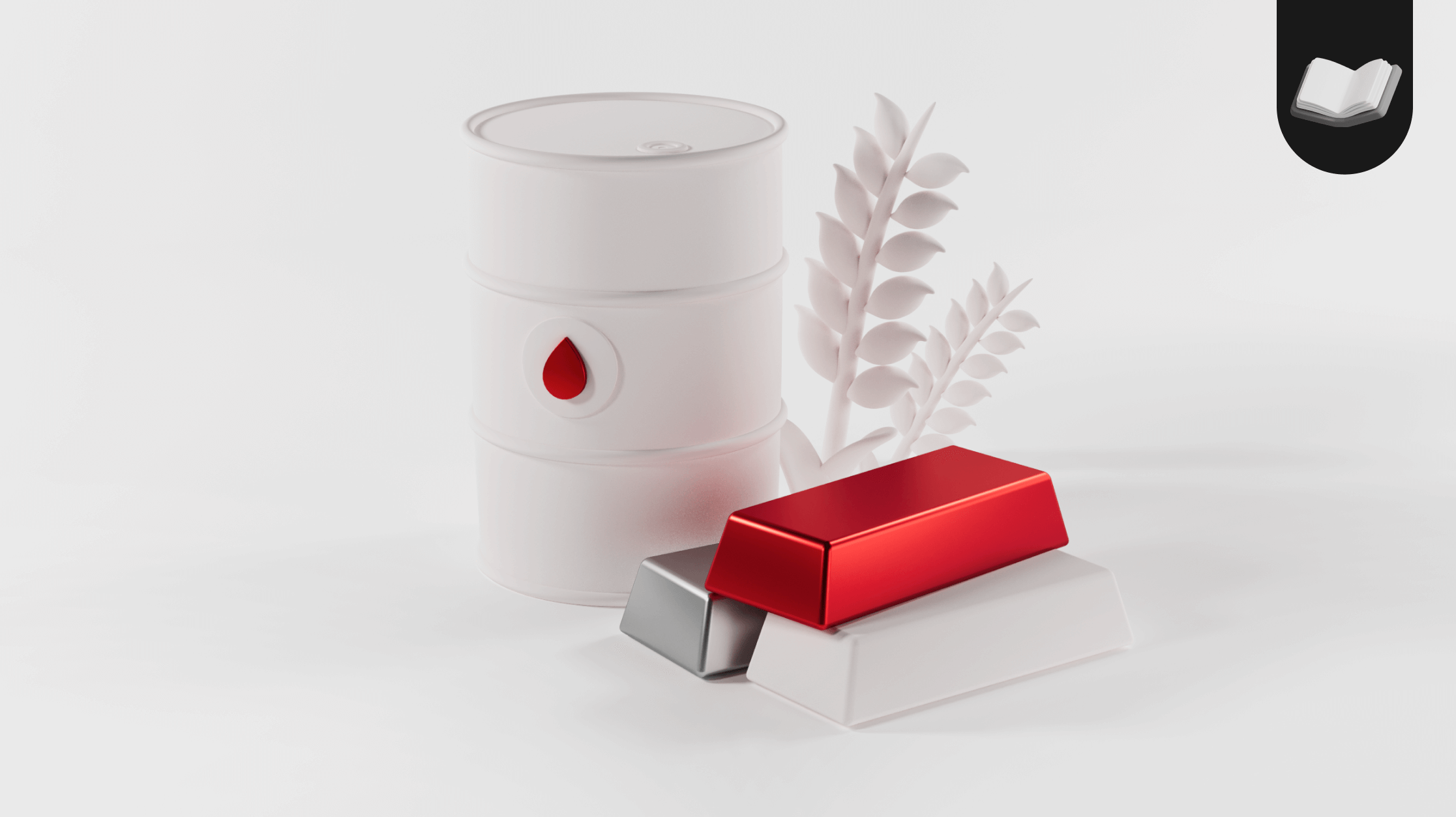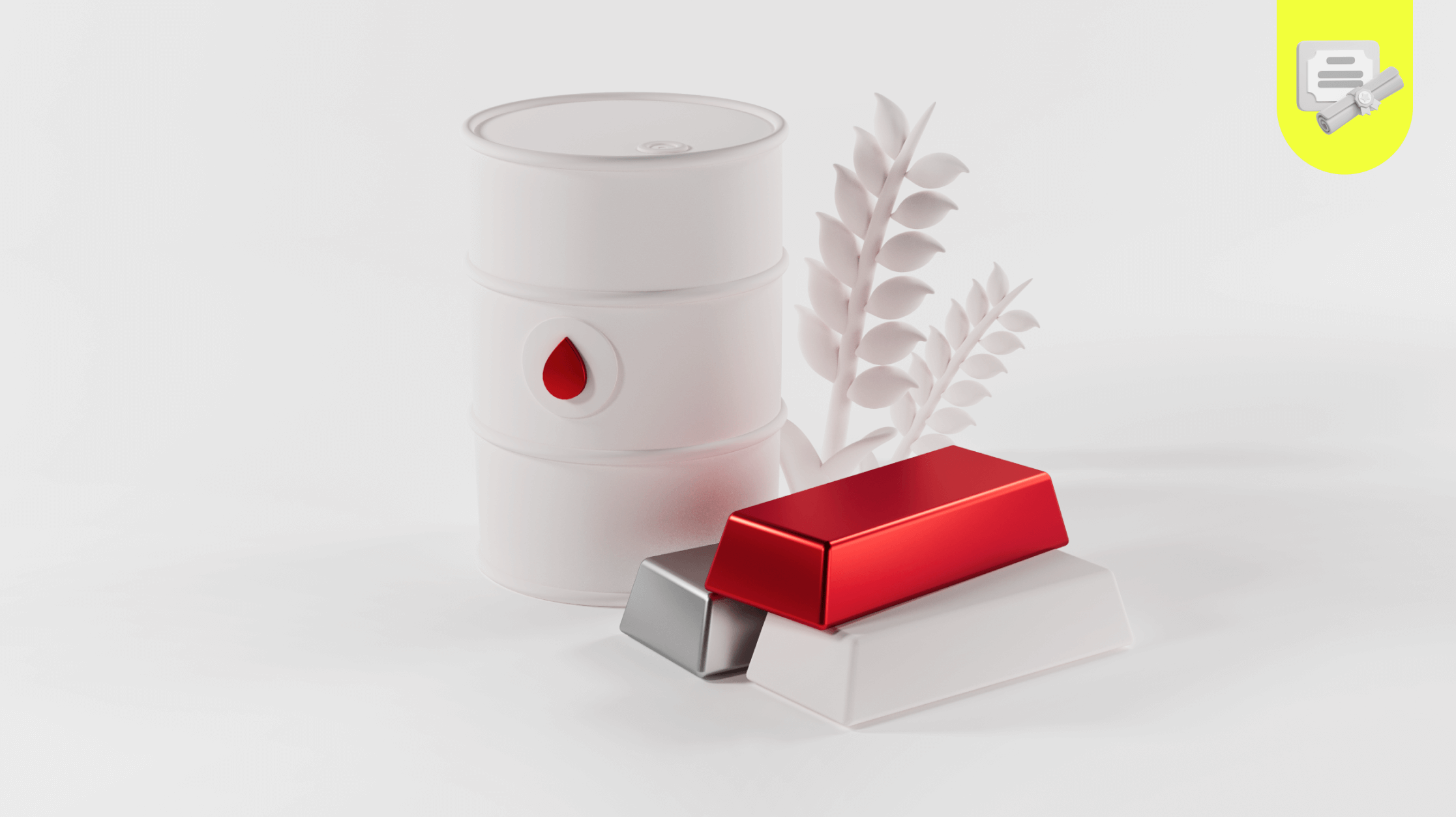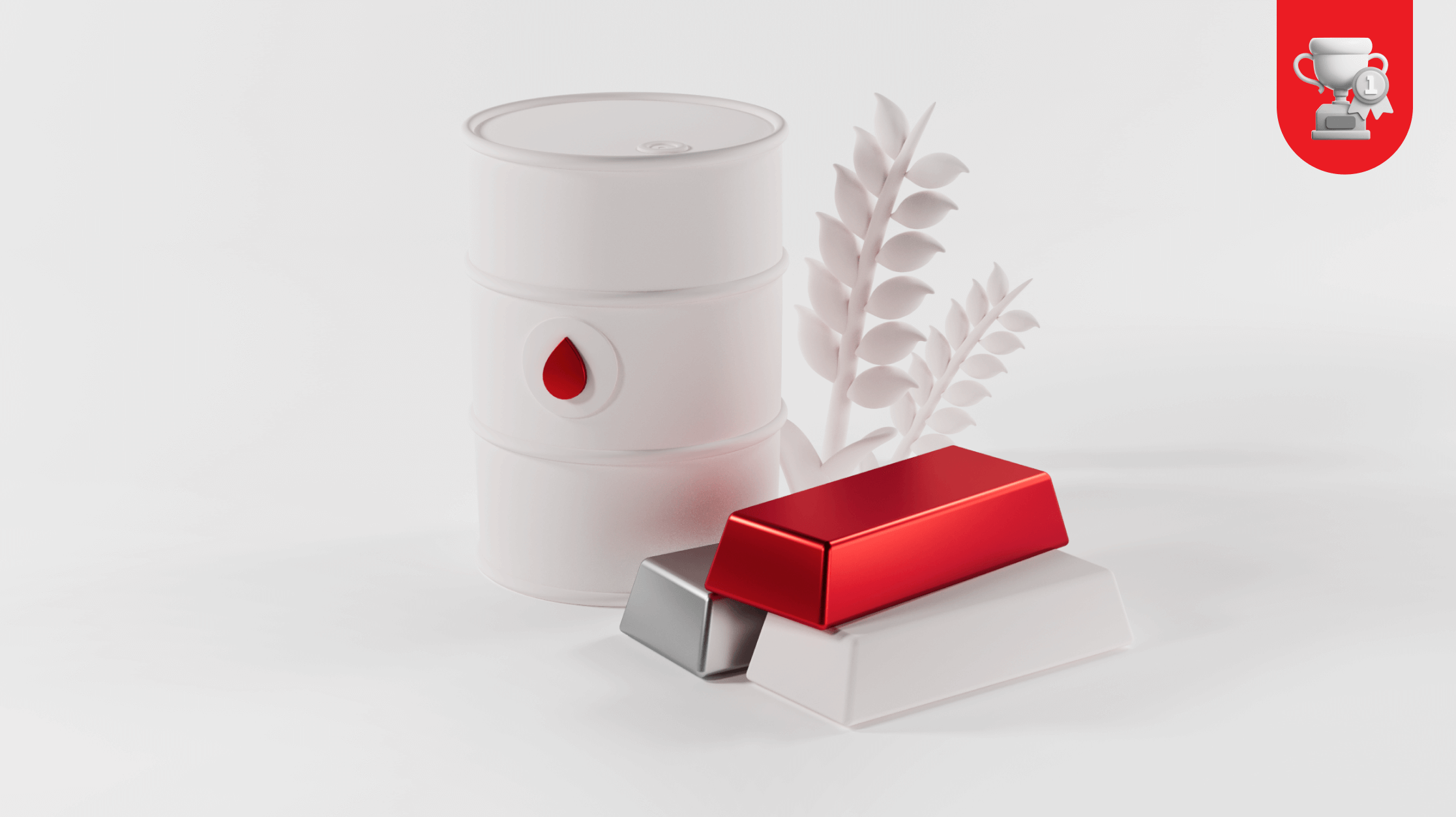Understanding Commodities Trading: A Beginner’s Guide

Commodities are the raw materials that fuel our everyday lives such as oil, wheat, gold, coffee, and more. Beyond what we see at the supermarket or gas pump, they also play a significant role in financial markets.
Whether you're just exploring trading or looking to diversify, commodities offer a dynamic space where global events, weather and supply-demand imbalances can drive real opportunity.
This guide will walk you through the essentials of commodity trading: what it is, how it works, and how you can start trading with confidence.
Table of Contents
What is Commodities Trading?
Why Trade Commodities?
Types of Commodities
How Commodity Prices are Determined
How to Trade Commodities
Key Terms in Commodities Trading
When to Trade Commodities
Technical vs. Fundamental Analysis
Getting Started with Commodities
Common Mistakes to Avoid
Key Takeaways
What is Commodities Trading?
Let’s start with the basics.
Commodities trading involves buying and selling raw materials with the goal of profiting from price changes. Unlike stocks (which represent ownership in companies), commodities are physical goods like oil, wheat, or silver, that get traded in large quantities.
Traders can speculate on price direction, hedge against inflation, or diversify their investment portfolios using these tangible assets.
Before diving deeper, let’s understand why commodities are so popular among traders.
Why Trade Commodities?
So, what makes commodity trading attractive?
Commodities are known for their volatility, global relevance, and long history of being used as value stores. In this section, we’ll look at the main benefits that keep traders coming back to the commodity markets.
Inflation Hedge: Commodities like gold tend to hold value when inflation rises.
Global Demand: As populations grow and industries expand, demand for resources like oil, corn, or metals increases.
Diversification: Commodities often move differently from stocks or bonds, helping to balance risk.
Speculative Opportunity: Short-term traders love the price swings triggered by weather, politics and supply shocks.
Hedging Tool: Businesses and investors use commodities to protect themselves against future price changes.
Now that you know the “why,” let’s break down the different types of commodities you can trade.
Types of Commodities
Commodities are grouped into two main categories: hard commodities and soft commodities.
This section introduces the categories and what they include.
Hard Commodities: These are natural resources mined or extracted, such as oil, gold, silver and copper.
Soft Commodities: These are agricultural or livestock-based like wheat, corn, sugar, coffee and cattle.
Each category reacts differently to market forces, so understanding them can help shape your trading approach.
Next, let’s explore what causes commodity prices to rise or fall.
How Commodity Prices are Determined
Unlike company stocks, which depend on earnings and management, commodities are driven by more global, sometimes unpredictable forces.
In this section, we’ll simplify the key price drivers.
Supply and Demand: Basic economics. Low supply or high demand pushes prices up.
Weather: Droughts or floods can impact crops, affecting soft commodities.
Geopolitical Events: Conflicts can disrupt oil or metal production.
Currency Strength: Commodities are often priced in U.S. dollars. A stronger USD usually means lower commodity prices.
Government Policies: Tariffs, subsidies, and trade restrictions all play a role.
Once you understand the drivers, the next question is: how do you actually trade them?
How to Trade Commodities
There are several ways to access the commodity markets, some are direct, others are more speculative. In this section, we’ll keep it simple and easy to understand.
Futures Contracts: Agreements to buy/sell a commodity at a set price and date in the future.
CFDs (Contracts for Difference): Speculate on price movements without owning the physical commodity.
ETFs: Funds that track the price of a commodity or basket of commodities.
Physical Ownership: Buying actual gold bars or bags of coffee—more for long-term investors than traders.
CFDs, like those offered by brokers such as D Prime, are a popular choice for beginners because they offer flexibility and lower barriers to entry.
Now that you know how trading works, let’s go over the lingo.
Key Terms in Commodities Trading
To trade with confidence, you need to understand the vocabulary. Here's a quick glossary.
Spot Price: The current market price of a commodity.
Futures Contract: A legal agreement to buy or sell at a set future date and price.
Leverage: The ability to control a large trade with a smaller amount of capital.
Margin: The deposit needed to open a leveraged position.
Lot Size: The amount of a commodity in a trade contract.
Understanding these terms will help you navigate platforms and avoid surprises.
Next, let’s explore the best times to trade different commodities.
When to Trade Commodities
Commodities don’t all move at the same time. This section outlines the most active hours for major commodities.
Crude Oil: Most active during U.S. and London sessions.
Gold: High volume during New York and London overlap.
Agricultural Commodities: Linked to U.S. trading hours, especially for corn, soybeans and wheat.
Knowing when volume is highest gives you better liquidity and tighter spreads.
Once you’re comfortable with timing, it’s time to look at how traders analyze the market.
Technical vs. Fundamental Analysis
There are two main schools of thought in commodities trading: technical and fundamental.
Fundamental Analysis: Looks at supply reports, weather conditions, global events and economic data.
Technical Analysis: Uses charts, indicators, and patterns to identify entry and exit points.
Most experienced traders use a mix of both. Fundamentals tell you why, while technical help you time the when.
Now let’s get practical. Here’s how you can take your first step into the market.
Getting Started with Commodities
Here are some valuable steps to follow before you set out to trade Commodities:
Choose a Broker – Select one broker like D Prime with access to major commodities, low fees and good tools.
Use a Demo Account – Practice trading with no risk.
Learn the Market – Follow news and seasonal trends.
Study the Charts – Identify key support and resistance levels.
Risk Management – Don’t risk more than 1-2% of your capital per trade.
Use Resources – D Prime’s Market Analysis can give you timely insights.
Even with preparation, beginners can still fall into avoidable traps. Let’s review the most common ones next.
Common Mistakes to Avoid
This section highlights the most frequent beginner errors in commodity trading and how to sidestep them.
Overtrading: Not every dip or spike is a trade.
Ignoring Risk: Be sure to use stop-losses when needed.
Chasing News: Big headlines can create false signals.
Too Much Leverage: It can magnify gains and losses.
Smart traders learn from mistakes. Smarter traders avoid them from the start.
Key Takeaways
Commodities trading isn’t just for experts, it’s for anyone interested in understanding the world’s most essential markets.
Start slow. Focus on education, discipline and risk control. Whether you’re trading gold, oil, or grain, strategy and preparation make all the difference.
Ready to dive deeper? Our next guide will show you how to read commodity market signals like a pro.
Disclaimer
This information contained in this blog is intended for general reference only and should not be construed as investment advice, a recommendation, an offer, or an invitation to buy or sell any financial instruments. It does not consider any specific recipient’s investment objectives or financial situation or particular needs and should not be regarded as personalized advice. Past performance references are not reliable indicators of future performance. D Prime and its affiliates make no representations or warranties about the accuracy or completeness of the information provided and accept no liability for any losses or damages resulting from its use or from any investments made based on it.
Do not rely on the above content to replace your independent judgment. You should consider the appropriateness of this information concerning your personal circumstances before making any investment decisions. The market is risky, and investments should be made with caution.
@2025 D Prime All Rights Reserved

